Text
Advancements in Greenhouse Technology in Protected Cultivation Industry

Introduction
Innovations in greenhouse technology are revolutionizing the Protected Cultivation Industry, providing advanced solutions for efficient and sustainable crop production. This article delves into the latest trends in greenhouse technology, their impact on protected cultivation, and the opportunities they offer for growers and industry stakeholders.
Market Expansion in Greenhouse Technology
The greenhouse technology for Protected Cultivation Market has witnessed remarkable growth, reaching a market value of $18.5 billion in 2023. Projections indicate a robust Compound Annual Growth Rate CAGR of 10% - 12%, leading to an estimated market size of $30.2 - 35.8 billion by 2028. This growth is fueled by the increasing adoption of advanced greenhouse solutions, the demand for year-round crop production, and the emphasis on sustainable farming practices.
Advanced Climate Control Systems
Innovative climate control systems integrate smart sensors, automated ventilation, and climate monitoring tools to optimize crop growth conditions. These technologies enhance resource utilization, improve crop quality, and mitigate environmental risks, driving efficiency and productivity in protected cultivation.
Energy-Efficient Designs
Greenhouse manufacturers are integrating energy-efficient designs, including solar panels, energy-efficient glazing materials, and insulation systems, to reduce energy consumption and operational costs. These designs promote sustainability, minimize environmental footprint, and enhance overall crop production.
Vertical Farming Solutions
Vertical farming solutions harness hydroponics and aeroponics to maximize space utilization and crop density. These systems incorporate LED lighting, nutrient solutions, and controlled environments to optimize crop growth, increase productivity, and minimize environmental impact.
Market Opportunities and Challenges
Opportunities:
Resource Efficiency: Advanced greenhouse technology solutions optimize resource utilization, reduce water consumption, and minimize environmental impact, leading to increased efficiency and productivity.
Local Food Production: Greenhouse technology contributes to local food production, urban agriculture, and food security, providing fresh, nutritious produce to urban communities.
Innovation and Collaboration: The adoption of advanced greenhouse technologies fosters innovation, collaboration, and knowledge sharing within the industry, driving continuous improvement and industry growth.
Challenges:
Technological Integration: Implementing and managing advanced greenhouse technologies require specialized knowledge, training, and technical expertise, emphasizing the need for continuous education and skill development within the industry.
Regulatory Compliance: Adhering to environmental regulations, energy efficiency standards, and sustainability certifications can pose challenges for greenhouse manufacturers, necessitating compliance measures and industry best practices.
Market Competition: As the greenhouse technology market expands, competition among growers, suppliers, and technology providers intensifies, requiring differentiation strategies, value-added offerings, and continuous innovation to stay competitive in the market.
Conclusion
Innovations in greenhouse technology are driving enhanced Protected Cultivation practices, providing sustainable solutions for efficient crop production. By embracing advanced climate control systems, energy-efficient designs, and vertical farming solutions, growers and stakeholders can lead the way in sustainable agriculture practices and drive industry growth.
#Protected Cultivation Market Analysis#Protected Cultivation Market Demand#Protected Cultivation Market Forecast#Protected Cultivation Market Growth#Protected Cultivation Market Outlook#Protected Cultivation Market Revenue#Protected Cultivation Market Size#Protected Cultivation Market Trends#Protected Cultivation market#Protected Cultivation Industry#Protected Cultivation market share#Protected Cultivation Industry research reports#Protected Cultivation market research reports#Protected Cultivation market major players
0 notes
Text
Insights into the Evolving Net Wrap Market
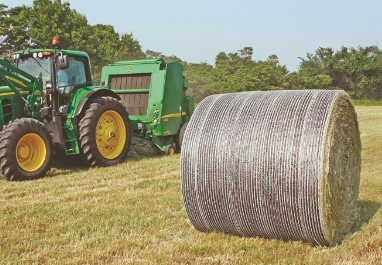
Introduction
In the realm of global economic stability, the agricultural industry plays a pivotal role, continuously advancing towards efficiency and sustainability. Within this landscape, the Net Wrap Market emerges as a vital player, offering solutions to enhance baling efficiency while addressing environmental concerns. Let's delve into the dynamic world of the Net Wrap Market, exploring its growth trajectory, technological innovations, and sustainability initiatives.
Understanding Market Dynamics
The Net Wrap Market is experiencing steady growth, with a projected Compound Annual Growth Rate CAGR of 5.8%. This growth is fueled by the modernization of agriculture, increasing demand for efficient baling materials, and continuous technological advancements in net wrap technology. Farmers increasingly recognize the benefits of net wrap in optimizing operations and preserving hay quality.
Insights from Market Research Reports
Valuable insights from market research reports forecast the Net Wrap Market to reach USD 1.2 billion by 2027. These reports provide comprehensive analyses of market trends, competition, and emerging opportunities, empowering stakeholders to make informed decisions and navigate market complexities effectively.
Addressing Agricultural Challenges
With the global population projected to reach 9 billion by 2050, agricultural production must rise to meet growing food demands. Net wrap plays a pivotal role in ensuring hay quality preservation, reducing spoilage, and improving labor efficiency. As cities expand and dietary habits shift, the demand for high-quality forage supported by efficient baling methods like net wrap continues to rise.
Asia-Pacific: A Region of Growth
The Asia-Pacific region emerges as a key driver of net wrap market growth, fueled by rapid urbanization, changing consumer preferences, and government initiatives to modernize agriculture. With a focus on efficiency and sustainability, farmers in this region increasingly adopt net wrap solutions to meet evolving agricultural needs.
Innovations Shaping the Industry
Advancements in net wrap materials revolutionize the industry, with UV-stabilized polymers offering enhanced durability and biodegradable alternatives gaining traction among eco-conscious farmers. Manufacturers invest in research and development to develop innovative net wrap solutions that cater to the evolving needs of farmers worldwide.
Embracing Sustainability
Sustainability takes center stage in the Net Wrap Market, with growing demand for eco-friendly products and increasing regulatory influence driving industry-wide transformations. As environmental concerns mount, stakeholders prioritize sustainable practices to ensure the long-term viability of the industry.
Market Expansion and Competitive Landscape
Market revenue is poised to exceed USD 900 million by the forecast period's end, driven by increased investments in agriculture and market expansion efforts by key players. While North America holds a dominant position, regions like Europe and Asia-Pacific experience significant growth, fueled by expanding agricultural activities and modernization efforts.
Trends Shaping the Future
Several trends reshape the future of the Net Wrap Market, including IoT technology integration, advanced material development, and collaborative partnerships between manufacturers and technology providers. By embracing innovation, sustainability, and data-driven decisions, stakeholders contribute to a thriving agricultural future supported by efficient baling solutions like net wrap.
Conclusion
The Net Wrap Market offers promising opportunities for stakeholders to navigate market dynamics, capitalize on emerging trends, and drive sustainable growth in the agricultural industry. By embracing innovation and sustainability, stakeholders pave the way for a more efficient and environmentally conscious future for baling operations worldwide Top of Form.
#Net Wrap Market#Net Wrap Market Analysis#Net Wrap Market Demand#Net Wrap Market Forecast#Net Wrap Market Growth#Net Wrap Market Outlook#Net Wrap Market Revenue#Net Wrap Market Size#Net Wrap Market Trends#Net Wrap Market Research reports
0 notes
Text
The Rise of Vertical Farming in Protected Cultivation
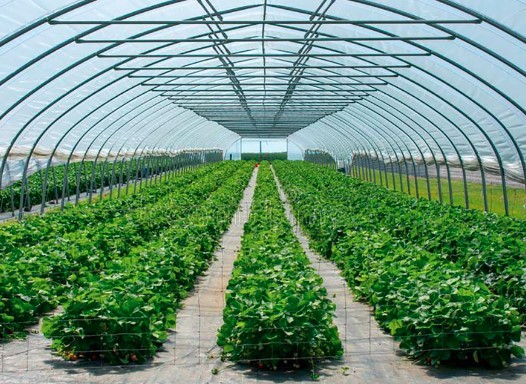
Introduction
Vertical farming emerges as a disruptive force within the Protected Cultivation Industry, offering a paradigm shift in sustainable crop production methodologies. This summary elucidates the burgeoning trend of vertical farming, delineating its impact on the industry landscape and the myriad opportunities it presents for growers and stakeholders.
Market Dynamics
Vertical farming experiences meteoric growth, propelling the market to $6.7 billion in 2023. Forecasts anticipate a robust Compound Annual Growth Rate CAGR of 15% - 17%, envisaging a market valuation of $12.4 - 14.8 billion by 2028. This surge is fueled by the escalating adoption of vertical farming solutions, driven by imperatives of space efficiency and sustainable crop cultivation.
Sustainable Paradigms in Vertical Farming
Resource Optimization
Sustainable vertical farming pivots on resource optimization, entailing a reduction in water consumption and a mitigation of environmental footprint. Innovations spanning water-efficient irrigation systems, LED lighting, and organic cultivation methodologies amplify crop quality and productivity while curtailing resource usage.
Urban Agriculture and Food Security
Vertical farming assumes a pivotal role in urban agriculture, countering food security conundrums and provisioning fresh produce to burgeoning urban populations. Harnessing vertical expanse within urban locales fortifies local food resilience, truncates food miles, and champions sustainability.
Circular Economy Principles in Vertical Farming - Waste Reduction
Circular economy principles permeate vertical farming endeavors, advocating recycling, waste minimization, and resource recuperation to orchestrate a self-sustaining ecosystem. Stratagems encompassing composting, nutrient recycling, and water reutilization assuage waste generation while propagating sustainable agrarian practices.
Market Outlook: Opportunities and Challenges
Opportunities
Resource Efficiency: Sustainable vertical farming methodologies optimize resource utilization, curtailing water consumption and assuaging environmental footprint.
Local Food Production: Vertical farming augments local food production, fortifying urban agriculture, and assuring food security by provisioning fresh produce to urban enclaves.
Innovation and Collaboration: Adoption of sustainable vertical farming practices fosters an ambiance of innovation, collaboration, and knowledge dissemination within the industry fraternity.
Challenges
Technological Integration: Implementation of sustainable vertical farming paradigms necessitates specialized knowledge, technical acumen, and investments in cutting-edge technologies.
Regulatory Compliance: Adherence to environmental strictures, food safety edicts, and sustainability certifications poses a regulatory labyrinth for vertical farming operatives.
Market Competition: Burgeoning landscape of the vertical farming milieu precipitates heightened competition, necessitating stratagems of differentiation, value augmentation, and perpetual innovation.
Conclusion
The ascendancy of vertical farming in the Protected Cultivation Market heralds a transformative epoch for sustainable agriculture, urban food provisioning, and environmental guardianship. By embracing sustainable methodologies, stakeholders within the vertical farming milieu are poised to spearhead innovative crop cultivation techniques and propel industry expansion.
#Protected Cultivation Market Analysis#Protected Cultivation Market Demand#Protected Cultivation Market Forecast#Protected Cultivation Market Growth#Protected Cultivation Market Outlook#Protected Cultivation Market Revenue#Protected Cultivation Market Size#Protected Cultivation Market Trends#Protected Cultivation market#Protected Cultivation Industry#Protected Cultivation market share#Protected Cultivation Industry research reports#Protected Cultivation market research reports#Protected Cultivation market major players
0 notes
Text
Market Segmentation and Regional Analysis in the Crop Protection Industry
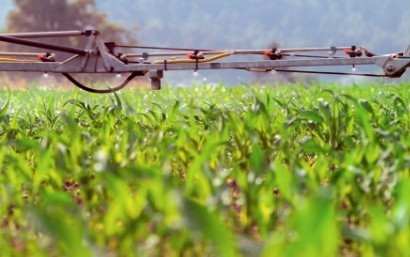
The crop protection market is diverse and complex, with a wide range of products, technologies, and applications catering to different crops and regions. In this blog, we will explore the market segmentation and regional dynamics of the crop protection industry, providing insights into key market trends and opportunities.
Market Segmentation:
The Crop Protection Market can be segmented based on product type, crop type, application method, and mode of action. Major product categories include herbicides, insecticides, fungicides, and biopesticides, each targeting specific pests, diseases, and weeds. Crop protection products are used across various crop categories, including cereals, fruits, vegetables, and oilseeds.
Regional Analysis:
The global crop protection market is geographically diverse, with different regions exhibiting varying market dynamics and growth potentials. Some of the key regions driving market growth include:
North America: North America is a significant market for crop protection products, driven by extensive agricultural land, advanced farming practices, and high adoption of biotechnology. The United States and Canada are major contributors to market growth, with a strong focus on innovation and technology adoption.
Europe: Europe is another prominent market for crop protection products, characterized by stringent regulatory frameworks and increasing demand for sustainable agriculture solutions. The European Union has strict regulations governing pesticide use, driving the adoption of biological and organic alternatives.
Asia-Pacific: The Asia-Pacific region is witnessing rapid growth in the crop protection market, fueled by population growth, urbanization, and increasing food demand. Countries such as China, India, and Australia are key contributors to market expansion, with a growing focus on improving crop yields and quality.
Latin America: Latin America is a major agricultural hub, known for its large-scale production of crops such as soybeans, corn, and sugarcane. Brazil and Argentina are key markets for crop protection products, driven by extensive cropland and favorable climatic conditions.
Key Market Trends:
Shift Towards Biologicals: There is a growing trend towards the use of biological crop protection products in response to consumer demand for safer and more sustainable agricultural practices. Biopesticides, biofertilizers, and microbial-based solutions are gaining popularity as alternatives to synthetic chemicals.
Digitalization and Precision Agriculture: Digital farming technologies are transforming crop protection practices, enabling farmers to monitor fields, detect pest infestations, and optimize inputs more efficiently. Sensors, drones, and satellite imagery provide real-time data for precision application of crop protection products.
Sustainable Agriculture Initiatives: Sustainability is a key focus area in the crop protection industry, with companies and policymakers promoting eco-friendly solutions and conservation practices. Integrated pest management (IPM), organic farming, and agroecological approaches are gaining traction as sustainable alternatives to conventional crop protection methods.
Opportunities and Challenges:
The Crop Protection Market presents numerous opportunities for innovation, collaboration, and market expansion. However, it also faces challenges such as regulatory constraints, resistance issues, and environmental concerns. Companies that invest in research and development, develop sustainable solutions, and adapt to changing market dynamics can succeed in this competitive landscape.
Conclusion:
In conclusion, the crop protection market is dynamic and evolving, driven by changing consumer preferences, technological advancements, and sustainability imperatives. Understanding market segmentation and regional dynamics is essential for stakeholders to identify growth opportunities, navigate regulatory challenges, and capitalize on emerging market trends. By staying informed and proactive, companies can position themselves for success and contribute to sustainable agriculture practices globally.
#Crop Protection market#Crop Protection Industry#Crop Protection market share#Crop Protection market analysis#Crop Protection market challenges#Crop Protection market emerging players#Crop Protection market growth#Crop Protection market top players#Crop Protection market major players#Crop Protection market opportunities#Crop Protection market trends#Crop Protection market research reports#Crop Protection Industry research reports#Global Crop Protection Industry#Global Crop Protection Market#Crop Protection Industry outlook
0 notes
Text
Exploring the Dynamics of the Net Wrap Market

Introduction:
The net wrap market serves as a vital component of modern agriculture, offering efficient solutions for bundling and preserving forage materials. In this blog, we delve deeper into the dynamics of the net wrap industry, examining key market drivers, challenges, opportunities, and future prospects backed by statistical insights and market analysis.
Market Dynamics:
1. Market Growth Trajectory:
The Net Wrap Market has been witnessing a steady growth trajectory, propelled by the increasing adoption of mechanized harvesting techniques and the rising demand for high-quality forage preservation solutions across various agricultural sectors.
Statistical insights reveal a compound annual growth rate CAGR of approximately 4% in the global net wrap market over the past five years, with further growth projections in the forecast period.
2. Key Market Drivers:
Mechanization in Agriculture: The ongoing trend towards mechanization in agriculture, particularly in developed regions, is a primary driver of demand for net wrap products. Mechanized baling and wrapping processes offer increased efficiency and labor savings for farmers.
Expansion of Livestock Farming: The expansion of the livestock farming sector, driven by growing global demand for meat and dairy products, fuels the need for efficient forage preservation methods, thereby boosting the demand for net wrap.
Technological Advancements: Continuous advancements in net wrap materials and manufacturing processes, aimed at enhancing product durability, UV resistance, and bale wrapping efficiency, contribute to market growth.
3. Market Challenges:
Environmental Concerns: The non-biodegradable nature of traditional net wrap materials raises environmental concerns related to waste accumulation and disposal. This has led to increased scrutiny and calls for sustainable alternatives within the industry.
Pricing Pressures: Intense competition among market players and fluctuating raw material prices pose challenges in maintaining competitive pricing strategies, impacting profit margins and market stability.
4. Emerging Trends and Opportunities:
Sustainable Alternatives: The growing focus on sustainability and environmental stewardship is driving research and development efforts towards the development of biodegradable and recyclable net wrap materials, presenting opportunities for market innovation.
Expansion in Developing Markets: Emerging economies, particularly in Asia-Pacific and Latin America, present untapped opportunities for market expansion due to increasing adoption of modern agricultural practices and rising mechanization levels.
Product Diversification: Market players are increasingly focusing on diversifying their product portfolios to cater to specific customer needs and preferences, such as specialized net wrap solutions for different crop types and baling equipment.
Conclusion:
The Net Wrap Industry continues to evolve in response to changing agricultural landscapes, technological advancements, and environmental considerations. By addressing key challenges, capitalizing on emerging trends, and embracing opportunities for innovation and market expansion, stakeholders can navigate the dynamic landscape of the net wrap industry and drive sustainable growth in the years to come.
#Net Wrap Market#Net Wrap Market Analysis#Net Wrap Market Demand#Net Wrap Market Forecast#Net Wrap Market Growth#Net Wrap Market Outlook#Net Wrap Market Revenue#Net Wrap Market Size#Net Wrap Market Trends#Net Wrap Market Research reports
0 notes
Text
The Growing Trend of Vertical Farming in the Protected Cultivation Industry
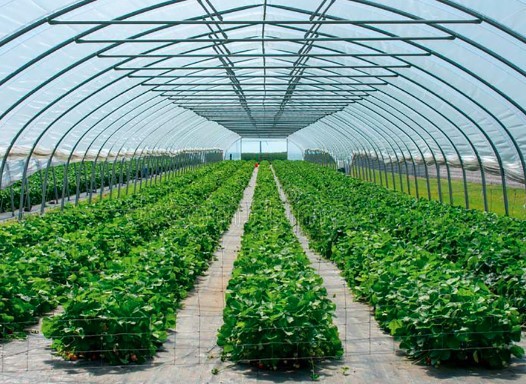
Introduction
Vertical farming is revolutionizing the Protected Cultivation Industry, offering innovative solutions for sustainable crop production in controlled environments. This blog explores the rising trend of vertical farming, its impact on the industry, and the opportunities it presents for growers and stakeholders.
Vertical Farming Market Growth
Vertical farming has seen remarkable growth, with the market reaching $6.7 billion in 2023. Projections indicate a robust CAGR of 15% - 17%, with an estimated market size of $12.4 - 14.8 billion by 2028. This growth is driven by the increasing adoption of vertical farming solutions, the demand for efficient space utilization, and the focus on sustainable and resource-efficient crop production.
Sustainable Practices in Vertical Farming
Resource Optimization
Sustainable vertical farming practices focus on resource optimization, reducing water consumption, and minimizing environmental impact. Innovations in water-efficient irrigation systems, LED lighting, and organic growing practices enhance crop quality and productivity while minimizing resource usage.
Urban Agriculture and Food Security
Vertical farming plays a vital role in urban agriculture, addressing food security challenges and providing fresh produce to urban populations. By utilizing vertical space in urban areas, vertical farms contribute to local food resilience, reduce food miles, and promote sustainability.
Circular Economy Principles in Vertical Farming
Waste Reduction
Circular economy principles in vertical farming involve recycling, waste reduction, and resource recovery to create a closed-loop system. Strategies such as composting, nutrient cycling, and water reuse minimize waste generation and promote sustainable agricultural practices.
Market Opportunities and Challenges
Opportunities
Resource Efficiency: Sustainable vertical farming practices optimize resource utilization, reduce water consumption, and minimize environmental impact.
Local Food Production: Vertical farming contributes to local food production, urban agriculture, and food security, providing fresh produce to urban communities.
Innovation and Collaboration: The adoption of sustainable vertical farming practices fosters innovation, collaboration, and knowledge sharing within the industry.
Challenges
Technological Integration: Implementing sustainable vertical farming practices requires specialized knowledge, technical expertise, and investment in advanced technologies.
Regulatory Compliance: Adhering to environmental regulations, food safety standards, and sustainability certifications can pose challenges for vertical farming operators.
Market Competition: As the vertical farming market expands, competition intensifies, requiring differentiation strategies, value-added offerings, and continuous innovation.
Conclusion
The rise of vertical farming in the Protected Cultivation Market presents a transformative opportunity for sustainable agriculture, urban food production, and environmental stewardship. By embracing sustainable practices, vertical farming stakeholders can lead the way in innovative crop production methods and drive industry growth.
#Protected Cultivation Market Analysis#Protected Cultivation Market Demand#Protected Cultivation Market Forecast#Protected Cultivation Market Growth#Protected Cultivation Market Outlook#Protected Cultivation Market Revenue#Protected Cultivation Market Size#Protected Cultivation Market Trends#Protected Cultivation market#Protected Cultivation Industry#Protected Cultivation market share#Protected Cultivation Industry research reports#Protected Cultivation market research reports#Protected Cultivation market major players
0 notes
Text
Emerging Trends in Protected Cultivation Sector

Introduction
Protected cultivation, also known as greenhouse farming, continues to evolve with the introduction of new technologies, techniques, and trends aimed at improving productivity, efficiency, and sustainability. In this blog, we'll explore some of the emerging trends in protected cultivation that are shaping the future of greenhouse farming.
Vertical Farming
Vertical farming is gaining popularity in protected cultivation as growers seek innovative ways to maximize space and increase crop yields. In vertical farming systems, plants are stacked in multiple layers, utilizing vertical space more efficiently. This approach allows growers to produce larger quantities of crops in smaller footprints, making it particularly suitable for urban agriculture and areas with limited land availability.
Hydroponics and Aeroponics
Hydroponic and aeroponic systems are revolutionizing how plants are grown in protected cultivation. Hydroponics involves growing plants in nutrient-rich water without soil, while aeroponics involves suspending plant roots in air and misting them with nutrient solutions. These soilless cultivation methods offer several advantages, including precise control over nutrient delivery, water conservation, and faster plant growth rates, making them ideal for greenhouse production.
Smart Greenhouse Technology
Advancements in smart greenhouse technology are transforming traditional greenhouse operations into highly automated and data-driven systems. Smart greenhouse systems integrate sensors, actuators, and control systems to monitor and control environmental conditions such as temperature, humidity, light levels, and CO2 concentration. Artificial intelligence (AI) algorithms analyze data from sensors to optimize growing conditions, improve resource efficiency, and maximize crop yields, resulting in more sustainable and profitable greenhouse operations.
Click Here-To Know More about Protected Cultivation Market
Biological Crop Protection
Biological crop protection products, derived from natural sources such as beneficial microorganisms, biopesticides, and botanical extracts, are gaining traction in protected cultivation. These products offer effective alternatives to synthetic pesticides, with fewer negative impacts on human health and the environment. Growers are increasingly incorporating biological control agents into their integrated pest management (IPM) programs to manage pests and diseases while maintaining ecosystem balance and crop quality.
Climate-Resilient Cultivars
As climate change continues to impact weather patterns and growing conditions, the development of climate-resilient crop varieties is becoming essential in protected cultivation. Plant breeders are focusing on breeding cultivars that are tolerant to temperature extremes, drought, pests, and diseases, ensuring crop resilience and stability in changing environments. Climate-resilient cultivars not only enhance crop productivity and quality but also reduce the reliance on external inputs such as water, fertilizers, and pesticides.
Conclusion
The landscape of protected cultivation is constantly evolving, driven by technological advancements, market demands, and sustainability goals. Emerging trends such as vertical farming, hydroponics and aeroponics, smart greenhouse technology, biological crop protection, and climate-resilient cultivars are revolutionizing greenhouse farming practices and shaping the future of agriculture. By embracing these trends, growers can improve productivity, efficiency, and sustainability in protected cultivation, ensuring a more resilient and food-secure future.
#Protected Cultivation Market Analysis#Protected Cultivation Market Demand#Protected Cultivation Market Forecast#Protected Cultivation Market Growth#Protected Cultivation Market Outlook#Protected Cultivation Market Revenue#Protected Cultivation Market Size#Protected Cultivation Market Trends#Protected Cultivation Market#Protected Cultivation Industry#Protected Cultivation Market Share#Protected Cultivation Industry Research Reports#Protected Cultivation Market Research Reports#Protected Cultivation Market Top Players#Protected Cultivation Market Key Players#Protected Cultivation Market Major Players
1 note
·
View note
Text
Market Challenges and Future Outlook for Crop Protection
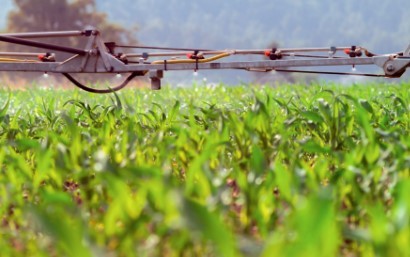
The crop protection industry faces a myriad of challenges ranging from regulatory pressures to environmental concerns. In this blog, we will explore the key challenges confronting the crop protection market and discuss the future outlook for the industry.
Challenges:
Regulatory Hurdles: Regulatory requirements for crop protection products are becoming increasingly stringent, posing challenges for manufacturers seeking to bring new formulations to market. Stringent testing procedures, lengthy approval processes, and evolving regulatory standards contribute to delays in product registration and market entry, hindering innovation and product development efforts.
Pesticide Resistance: Pesticide resistance is a significant challenge facing the crop protection industry, with pests and pathogens developing resistance to commonly used chemicals. Prolonged use of chemical pesticides without proper rotation or integrated pest management (IPM) strategies can accelerate the development of resistance, rendering existing control methods ineffective and necessitating the development of new, more potent formulations.
Environmental Concerns: Environmental sustainability is a growing concern for the crop protection industry, with increasing scrutiny on the impact of pesticides on ecosystems, wildlife, and human health. Pesticide runoff, soil contamination, and non-target effects on beneficial organisms pose risks to biodiversity and ecosystem health, leading to calls for stricter regulations and safer, more environmentally friendly alternatives.
Public Perception: Public perception of crop protection products and their potential risks to human health and the environment can influence consumer behavior, regulatory decisions, and industry practices. Negative media coverage, public awareness campaigns, and advocacy efforts by environmental and consumer groups can shape public opinion and drive demand for safer, more sustainable alternatives to conventional pesticides.
Click Here – To Know More about Crop Protection Market
Future Outlook:
Innovation and Technology Adoption: Despite the challenges, the future outlook for the crop protection industry remains promising, driven by ongoing innovation and technology adoption. Advances in biotechnology, digitalization, and precision agriculture are revolutionizing crop protection practices, enabling more sustainable, targeted, and effective pest and disease control strategies.
Biological Solutions: Biological crop protection products derived from natural sources such as microbes, plant extracts, and beneficial insects are expected to play an increasingly important role in integrated pest management (IPM) programs. Biologicals offer sustainable alternatives to chemical pesticides, with lower environmental impact, reduced risks of resistance, and compatibility with organic farming practices.
Digital Tools and Precision Agriculture: Digital technologies such as drones, sensors, and data analytics are transforming crop protection practices, enabling farmers to monitor crops in real-time, optimize pesticide applications, and target pest infestations more accurately. Precision agriculture techniques help reduce input costs, minimize environmental impact, and improve overall farm productivity.
Regulatory Landscape: The regulatory landscape for crop protection products is likely to evolve in response to growing concerns about environmental sustainability and pesticide safety. Regulatory agencies may impose stricter standards for product registration, require additional testing for environmental safety, and promote the adoption of safer, more sustainable alternatives to conventional pesticides.
Conclusion:
The Crop Protection Industry faces numerous challenges, from regulatory hurdles to environmental concerns, but the future outlook remains positive. By embracing innovation, adopting sustainable practices, and addressing public concerns, the industry can overcome these challenges and continue to play a vital role in ensuring global food security, environmental sustainability, and agricultural prosperity. Collaboration among industry stakeholders, regulatory authorities, and research institutions will be essential for navigating the evolving landscape and unlocking new opportunities for growth and advancement in the crop protection sector.
#Crop Protection Market#Crop Protection Industry#Crop Protection Market Share#Crop Protection Market Size#Crop Protection Report#Global Crop Protection Chemicals Market#Crop Protection Market Emerging Players#Crop Protection Market Growth#Crop Protection Market Major Players#Crop Protection Market Opportunities#Crop Protection Market Trends#Crop Protection Market Research Reports#Crop Protection Industry Research Reports
0 notes
Text
The Evolving Landscape of the Net Wrap Industry
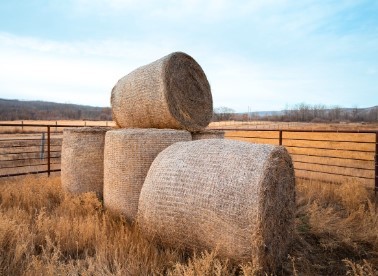
As agricultural practices continue to evolve and modernize, the net wrap market stands at the forefront of innovation, providing farmers with essential solutions for forage preservation and storage. In this insightful analysis, we explore the dynamic landscape of the net wrap industry, shedding light on emerging trends, market dynamics, and growth opportunities.
Market Dynamics and Trends:
The Net Wrap Market is characterized by several notable trends and dynamics:
Technological Advancements: Advances in manufacturing technologies and materials have led to the development of high-performance net wrap products. Innovations such as UV stabilization, tear resistance, and enhanced tensile strength are driving the adoption of premium net wrap solutions among farmers seeking superior forage protection.
Shift Towards Sustainable Agriculture: With increasing emphasis on sustainability, eco-friendly net wrap alternatives are gaining traction in the market. Biodegradable and compostable net wraps are emerging as viable options for environmentally conscious farmers, aligning with the broader trend towards sustainable agricultural practices.
Rise in Customization and Branding: As competition intensifies in the net wrap market, manufacturers are focusing on customization and branding to differentiate their products. Custom-printed net wraps featuring logos, branding elements, and color options allow farmers to personalize their bales, enhancing brand visibility and customer engagement.
Market Size and Growth Outlook:
The net wrap market has witnessed steady growth in recent years, driven by increasing mechanization in agriculture and the expanding livestock sector. With a market size exceeding USD 1.2 billion in 2020, the net wrap market is expected to register robust growth, propelled by rising demand for high-quality forage preservation solutions.
Key Market Players and Competition:
The net wrap market is highly competitive, with several prominent players vying for market share. Leading manufacturers such as RKW Group, Berry Global Inc., and CLAAS Group dominate the market, leveraging their extensive product portfolios and global distribution networks to maintain a competitive edge.
Opportunities and Challenges:
While the Net Wrap Market presents abundant opportunities for growth, it also faces certain challenges:
Price Volatility of Raw Materials: Fluctuations in the prices of raw materials, such as polyethylene and polypropylene, pose challenges for net wrap manufacturers. Price volatility can impact production costs and profit margins, necessitating effective supply chain management strategies.
Regulatory Compliance: Compliance with regulatory standards and environmental regulations remains a key consideration for net wrap manufacturers. Ensuring compliance with quality standards and waste management regulations is essential to maintaining market credibility and consumer trust.
Future Prospects and Market Trends:
Looking ahead, the net wrap market is poised for continued expansion, driven by technological innovations, sustainable product offerings, and the growing demand for efficient forage preservation solutions. As farmers prioritize productivity, sustainability, and forage quality, the demand for advanced net wrap solutions is expected to rise, creating new avenues for market growth and innovation.
Conclusion
The net wrap market is undergoing rapid transformation, driven by evolving agricultural practices and changing consumer preferences. With its crucial role in forage preservation and storage, net wrap remains an indispensable tool for modern farmers, offering reliability, efficiency, and peace of mind in agricultural operations.
#Net Wrap Market#Net Wrap Market Analysis#Net Wrap Market Demand#Net Wrap Market Forecast#Net Wrap Market Growth#Net Wrap Market Outlook#Net Wrap Market Revenue#Net Wrap Market Size#Net Wrap Market Trends#Net Wrap Market Research reports
0 notes
Text
Enhancing Crop Productivity with Advanced Agriculture Chemicals
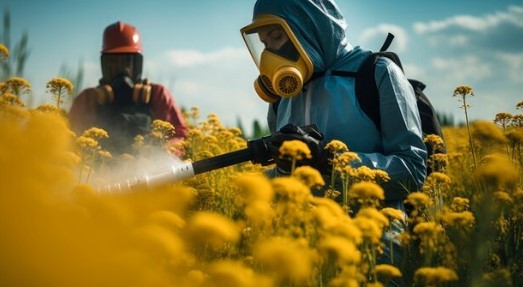
The Agriculture Chemical Market plays a crucial role in modern farming practices by providing essential inputs to enhance crop productivity and protect plants from pests and diseases. In this blog, we'll explore how advanced agriculture chemicals are revolutionizing the agriculture industry and driving improvements in crop yields and overall agricultural efficiency.
Fertilizers for Nutrient Management:
Fertilizers are essential inputs in agriculture, supplying plants with essential nutrients for growth and development. Traditional fertilizers contain nitrogen, phosphorus, and potassium (NPK), but advanced formulations also include micronutrients such as zinc, copper, and boron, tailored to specific crop requirements. These fertilizers help farmers optimize nutrient levels in the soil, leading to healthier plants and higher yields.
Pesticides and Herbicides for Pest Control:
Pesticides and herbicides are vital tools for managing pests, weeds, and diseases that can damage crops and reduce yields. Advanced formulations of pesticides and herbicides are designed to target specific pests while minimizing environmental impact and non-target effects. Integrated pest management (IPM) strategies combine chemical control with cultural, biological, and mechanical methods to reduce reliance on pesticides and promote sustainable pest management practices.
Biologicals and Biopesticides:
Biologicals and biopesticides are gaining popularity as eco-friendly alternatives to traditional chemical pesticides. These products contain naturally occurring microorganisms, such as bacteria, fungi, and viruses, that target pests while minimizing harm to beneficial insects and non-target organisms. Biologicals offer effective pest control with reduced environmental impact and are compatible with organic farming practices.
Soil Conditioners and Amendments:
Soil conditioners and amendments are used to improve soil structure, fertility, and water retention, leading to healthier plants and higher yields. Products such as compost, biochar, and gypsum help restore soil health, enhance nutrient availability, and promote root development. Additionally, soil pH modifiers such as lime and sulfur are used to adjust soil acidity or alkalinity to optimal levels for plant growth.
Plant Growth Regulators:
Plant growth regulators (PGRs) are chemicals that influence plant growth and development, regulating processes such as seed germination, flowering, and fruit set. PGRs can enhance crop yields by promoting root growth, increasing flower and fruit production, and improving stress tolerance. Advanced formulations of PGRs are tailored to specific crops and growth stages, providing precise control over plant physiology.
Precision Application Technologies:
Precision application technologies, such as variable rate application (VRA) systems and GPS-guided sprayers, enable farmers to apply agriculture chemicals with precision, optimizing input use and minimizing waste. These technologies help reduce environmental impact, improve resource efficiency, and maximize the effectiveness of agriculture chemical applications.
Conclusion:
Advanced Agriculture Chemical are revolutionizing modern farming practices by providing farmers with innovative tools to enhance crop productivity, improve soil health, and minimize environmental impact. By leveraging the latest advancements in fertilizers, pesticides, biologicals, and precision application technologies, farmers can optimize agricultural efficiency, increase yields, and ensure sustainable food production for future generations.
#Agriculture Chemical Industry#Global Agrochemical Industry#Agricultural Chemicals Market Research Reports#Agricultural Chemicals Industry Research Reports#Agriculture Chemical Market Analysis#Agriculture Chemical Market Demand#Agriculture Chemical Market Forecast#Agriculture Chemical Market Growth#Agriculture Chemical Market Outlook#Agriculture Chemical Market Revenue#Agriculture Chemical Market Size#Agriculture Chemical Market Trends#Agriculture Chemical Brands in Market#Agricultural Chemicals#Chemicals Used in Agriculture#Agriculture Chemical Companies#Agricultural Chemical Suppliers#Agriculture Chemical Malaysia#Agricultural Chemical Manufacturers
0 notes
Text
Market Dynamics of Protected Cultivation Technology
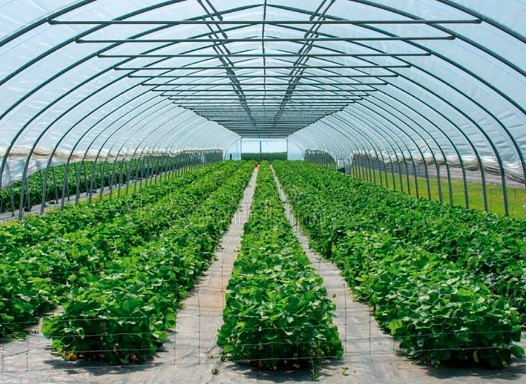
The market dynamics of Protected Cultivation Technology are shaped by various factors, including technological advancements, regulatory policies, and consumer preferences. Let's delve deeper into the key dynamics driving the adoption and growth of protected cultivation technology:
Technological Advancements:
Advancements in greenhouse technology have significantly enhanced the efficiency, productivity, and sustainability of protected cultivation systems. Innovations such as climate control systems, automated irrigation, and precision farming technologies enable growers to create optimal growing conditions for crops, maximize resource utilization, and minimize environmental impact. As technology continues to evolve, the adoption of advanced greenhouse solutions is expected to increase, driving market growth and competitiveness.
Regulatory Policies and Incentives:
Government regulations and incentives play a crucial role in shaping the adoption of protected cultivation technology. In many regions, policies promoting sustainable agriculture, water conservation, and environmental protection incentivize growers to invest in greenhouse farming practices. Subsidies, grants, and tax incentives for greenhouse construction, energy-efficient technologies, and water-saving irrigation systems encourage growers to adopt protected cultivation methods and comply with regulatory requirements.
Consumer Demand for Locally Grown Produce:
Consumer preferences for fresh, locally grown produce are driving the demand for protected cultivation technology. Greenhouse-grown fruits, vegetables, and herbs are perceived as safer, healthier, and more environmentally friendly than conventional produce, as they are less likely to be exposed to pesticides, contaminants, and environmental pollutants. Moreover, greenhouse farming enables year-round production of seasonal crops, reducing reliance on imported produce and food miles. As consumer awareness of food safety, quality, and sustainability grows, the market for protected cultivation technology is expected to expand further.
Economic Viability and Return on Investment:
The economic viability of protected cultivation technology depends on factors such as capital investment costs, operational expenses, crop yields, and market demand. While greenhouse construction and equipment may require significant upfront investment, the potential for higher yields, premium pricing, and reduced production risks can result in favorable returns on investment over time. Additionally, advancements in technology, economies of scale, and access to financing options can improve the affordability and accessibility of protected cultivation solutions for growers of all scales.
Environmental Sustainability and Climate Resilience:
Protected cultivation technology plays a crucial role in promoting environmental sustainability and climate resilience in agriculture. Greenhouse farming allows for efficient use of land, water, and energy resources, minimizing environmental footprint and greenhouse gas emissions. Moreover, controlled environment agriculture (CEA) technologies such as hydroponics, vertical farming, and aeroponics reduce water usage, soil erosion, and chemical runoff, preserving natural ecosystems and biodiversity. As climate change continues to pose challenges to traditional farming practices, the adoption of protected cultivation technology is expected to increase as a means of mitigating risks and ensuring food security.
Conclusion
The market dynamics of protected cultivation technology are influenced by a combination of technological innovation, regulatory policies, consumer demand, economic considerations, and environmental imperatives. By addressing these dynamics effectively, stakeholders in the protected cultivation industry can capitalize on opportunities for growth, sustainability, and resilience in modern agriculture.
#Protected Cultivation Market Analysis#Protected Cultivation Market Demand#Protected Cultivation Market Forecast#Protected Cultivation Market Growth#Protected Cultivation Market Outlook#Protected Cultivation Market Revenue#Protected Cultivation Market Size#Protected Cultivation Market Trends#Protected Cultivation Market#Protected Cultivation Industry#Protected Cultivation Market Share#Protected Cultivation Industry Research Reports#Protected Cultivation Market Research Reports#Protected Cultivation Market Major Players
0 notes
Text
Exploring the Fertilizer Industry Growth, Trends, and Outlook

Introduction
The fertilizer industry is a cornerstone of global agriculture, providing essential nutrients to crops and contributing significantly to food security worldwide. In recent years, the industry has witnessed dynamic growth driven by increasing agricultural activity, rising population, and the need for sustainable farming practices. This article offers a comprehensive analysis of the fertilizer industry, delving into its growth prospects, market trends, key players, and future outlook.
Fertilizer Industry Research Reports
Fertilizer Market research reports play a crucial role in providing insights into the fertilizer industry. These reports offer detailed analyses of market trends, demand-supply dynamics, competitive landscape, and emerging opportunities. Recent studies indicate a positive outlook for the global fertilizer market, with substantial growth expected in the coming years.
Fertilizer Industry Outlook
The fertilizer industry outlook is optimistic, buoyed by several key factors driving market expansion. These include increasing agricultural investments, technological advancements in fertilizer production, and government initiatives to promote sustainable farming practices. Market analysts project robust growth in the global fertilizer market, with significant opportunities for industry players to capitalize on emerging trends.
Fertilizer Industry Analysis
An in-depth analysis of the fertilizer industry reveals several noteworthy trends and developments shaping its trajectory:
Global Market Size
The global fertilizer market was valued at approximately USD 202 billion in 2023, with steady growth expected in the foreseeable future. Market size is projected to reach USD 285.01 billion by 2032, reflecting a compound annual growth rate CAGR of 3.30% from 2023 to 2032.

Market Growth
The fertilizer industry has witnessed steady growth in recent years, driven by increasing demand for crop nutrients and the adoption of advanced agricultural practices. Market analysts forecast sustained growth, particularly in the Asia-Pacific region, where population growth and expanding agricultural activity are driving fertilizer demand.
Market Segments
Nitrogen fertilizers dominate the global market, accounting for approximately 56% of fertilizer nutrient consumption in 2021.
Phosphatic and Potassic fertilizers also play significant roles, catering to specific crop nutrient requirements.
Production and Leading Producers
Global fertilizer production reached 193 million metric tons in 2021, with China, India, Russia, the United States, and Brazil emerging as top producers.
These countries leverage their abundant natural resources and manufacturing capabilities to meet domestic and international fertilizer demand.
Fertilizer Market Trends
Several key trends are reshaping the fertilizer market landscape:
Shift towards Dry Fertilizers
Dry fertilizers, including granular and powdered formulations, dominate the market due to their ease of handling, storage, and transportation.
Liquid fertilizers are gaining traction in certain regions, particularly for foliar applications and precision agriculture practices.
Sustainable Agriculture Practices
There is a growing emphasis on sustainable farming practices, driving demand for organic and eco-friendly fertilizers.
Bio-based fertilizers, such as organic compost and biofertilizers, are increasingly preferred by environmentally conscious farmers.
Technological Advancements
Advancements in fertilizer manufacturing technologies, including controlled-release formulations and micronutrient-enriched products, are enhancing crop nutrient uptake and efficiency.
Digital farming solutions, such as precision application systems and soil sensors, are revolutionizing fertilizer application methods and optimizing crop yields.
Fertilizer Suppliers and Market Share
The Fertilizer Market is characterized by a diverse range of suppliers, including multinational corporations, regional manufacturers, and distributors. Key players in the industry include:
Nutrien Ltd.
Yara International ASA
The Mosaic Company
CF Industries Holdings, Inc.
K+S Aktiengesellschaft
OCI Nitrogen
EuroChem Group AG
ICL Group
Coromandel International Limited
Haifa Group
Conclusion: Driving Agricultural Productivity
The fertilizer industry is poised for sustained growth and innovation, driven by increasing global demand for food and agricultural products. By leveraging technological advancements, embracing sustainable farming practices, and fostering strategic partnerships, fertilizer companies can contribute to enhanced agricultural productivity, improved crop yields, and environmental sustainability. As the industry continues to evolve, collaboration across the value chain and investment in research and development will be key to addressing emerging challenges and capitalizing on new opportunities in the dynamic fertilizer market landscape.
#Fertilizer Industry#Fertilizer Market Size#Fertilizer Market Analysis#Fertilizer Market Growth#Fertilizer Market Trends#Fertilizer Industry Research Reports#Fertilizer Market Research Reports#Fertilizer Market#Fertility Supplements Market#Fertilizer Production Machinery Market in India#Fertilizer Additives Market#Challenges in Fertilizer Marketing#Market Share of Different Fertilizers#Fertilizer Market in India#Bio Fertilizer Market Size in India#Fertilizer Industry Analysis#Fertilizer Industry Outlook#Fertilizer Suppliers#Bio Fertilizer Manufacturers
0 notes
Text
Exploring the Net Wrap Market Revenue, Trends, and Top Players
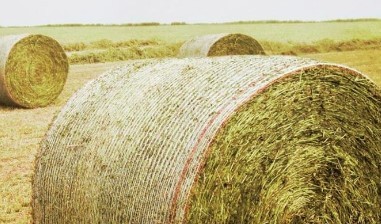
Introduction
Net wrap is a critical component in modern agricultural practices, providing efficient solutions for forage preservation. This article delves into the net wrap market, offering detailed insights into its demand, growth, outlook, revenue, size, trends, and key players.
Net Wrap Market Research Reports
Net Wrap Market Research Reports provide invaluable data and analyses of the net wrap industry. According to recent studies, the global net wrap market was valued at approximately USD 3.5 billion in 2021, with a projected compound annual growth rate (CAGR) of 4.2% from 2022 to 2028.
Net Wrap Market Demand
The demand for net wrap remains robust, driven by the increasing mechanization of agriculture and the need for efficient forage preservation solutions. Market projections indicate sustained growth in demand, particularly in regions witnessing rapid agricultural expansion.
Net Wrap Market Growth
The net wrap market is poised for significant growth, propelled by technological advancements and the adoption of precision farming practices. Projections suggest that the market size will exceed USD 5 billion by 2028, reflecting a steady increase in demand.
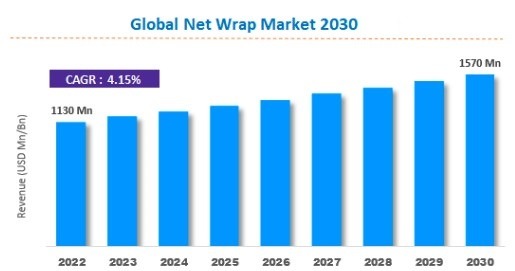
Net Wrap Market Outlook
The outlook for the net wrap market is optimistic, with rising awareness of its benefits in preserving forage quality and reducing spoilage. Factors such as population growth, urbanization, and changing dietary preferences are expected to drive further demand for forage preservation solutions.
Net Wrap Market Revenue
In 2021, the global net wrap market generated substantial revenue, with leading companies such as John Deere, Tama, and Cordexagri accounting for a significant share of the market. The market revenue is projected to continue growing, reflecting increased adoption across various agricultural sectors.
Net Wrap Market Size
The global net wrap market boasts a significant size, catering to diverse agricultural applications. As farmers increasingly recognize the importance of efficient forage preservation, the market size is expected to expand steadily, driven by both established and emerging markets.
Net Wrap Market Trends
Several trends are shaping the net wrap market, including:
Technological Advancements: Ongoing innovations in net wrap manufacturing technology, such as the development of high-strength polymers and precision wrapping systems, are enhancing product durability and operational efficiency.
Sustainability Initiatives: Growing environmental concerns are driving the adoption of sustainable net wrap solutions. Companies are investing in recyclable materials and eco-friendly manufacturing processes to meet consumer preferences and regulatory standards.
Net Wrap Market Top Players
Leading companies in the Net Wrap Market play a pivotal role in driving innovation and market growth. Some of the top players include:
John Deere: A renowned manufacturer of agricultural machinery, including net wrap solutions, John Deere has a strong global presence and a reputation for quality and reliability.
Tama: Tama is a leading provider of advanced net wrap products, offering a wide range of solutions tailored to meet the diverse needs of farmers worldwide.
Cordexagri: Cordexagri specializes in manufacturing high-quality net wrap and bale twine products, known for their durability and performance in various agricultural applications.
Novatex: Novatex is recognized for its innovative net wrap solutions, incorporating cutting-edge technologies to enhance efficiency and forage preservation.
RKW Group: With a focus on sustainability and environmental responsibility, RKW Group offers eco-friendly net wrap solutions designed to minimize environmental impact while maximizing performance.
Berry Global: Berry Global is a leading manufacturer of packaging and engineered materials, providing innovative net wrap solutions for the agricultural industry.
Conclusion
The net wrap market presents significant opportunities for growth and innovation, fueled by technological advancements and increasing agricultural activities worldwide. As key players continue to invest in research and development and sustainability initiatives, the market is expected to thrive, meeting the evolving needs of farmers and agricultural stakeholders.
#Net Wrap Industry#Net Wrap Market#Net Wrap Market Analysis#Net Wrap Market Demand#Net Wrap Market Forecast#Net Wrap Market Growth#Net Wrap Market Outlook#Net Wrap Market Revenue#Net Wrap Market Size#Net Wrap Market Trends#Net Wrap Market Research Reports#Net Wrap Industry Research Reports#Net Wrap Market Key Players#Net Wrap Market Top Players#Net Wrap Market Major Players#Net Wrap Market Opportunities
0 notes
Text
The Agricultural Chemicals Market Share, Growth, and Major Players

Introduction
The Agricultural Chemicals Market plays a vital role in modern farming practices, providing essential products for crop protection, soil fertility management, and pest control. This article delves into the dynamics of the agricultural chemicals market, including its demand, growth, outlook, revenue, size, trends, and prominent brands.
Agricultural Chemical Market Demand
The demand for agricultural chemicals remains robust, driven by the need to enhance crop productivity and mitigate yield losses caused by pests, diseases, and environmental stressors. Market research indicates a steady increase in global demand for agricultural chemicals, with the Asia-Pacific region leading consumption due to extensive agricultural activities.
Agricultural Chemical Market Growth
The agricultural chemicals market is experiencing steady growth, with a projected compound annual growth rate (CAGR) of approximately 4.5% over the forecast period. Factors contributing to market growth include population growth, expanding agricultural land, adoption of modern farming techniques, and the emergence of new crop protection solutions.
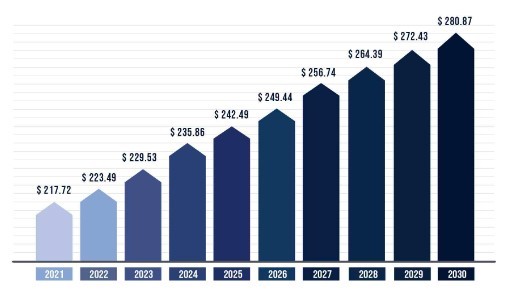
Agricultural Chemical Market Outlook
The outlook for the agricultural chemicals market is optimistic, driven by technological advancements, regulatory support for agricultural inputs, and increasing adoption of precision farming practices. Market analysts project sustained growth in market value, surpassing USD 300 billion by 2025, with significant contributions from emerging markets in Asia and Latin America.
Agricultural Chemical Market Revenue
In recent years, the revenue generated from the agricultural chemicals market has been on the rise. Global market revenue reached USD 220 billion in 2020, with herbicides accounting for the largest share followed by fertilizers and pesticides. The market revenue is expected to witness further growth, driven by increasing investments in agricultural inputs and crop protection solutions.
Agricultural Chemical Market Size
The agricultural chemicals market is sizable, with diverse product offerings catering to various crop types and farming systems. In 2020, the market size exceeded 250 million metric tons in terms of product volume. Herbicides, fungicides, and insecticides are among the most widely used agricultural chemicals, contributing to the market's substantial size.
Agricultural Chemical Market Trends
Several trends are shaping the landscape of the agricultural chemicals market, including:
Shift Towards Bio-based Solutions: There is a growing preference for bio-based and environmentally friendly agricultural chemicals, driven by concerns over chemical residues, environmental sustainability, and consumer preferences for organic produce.
Digital Agriculture: The integration of digital technologies such as precision agriculture, data analytics, and smart farming tools is transforming agricultural chemical applications. Digital platforms offer farmers real-time insights into crop health, soil conditions, and pest infestations, enabling targeted and efficient use of agricultural inputs.
Sustainable Agriculture Practices: Sustainability initiatives are gaining traction in the agricultural chemicals sector, with companies investing in eco-friendly formulations, biodegradable packaging, and responsible sourcing practices. Sustainable agriculture certifications and labels are becoming increasingly important for market differentiation and consumer trust.
Agriculture Chemical Brands in Market
Prominent brands in the Agricultural Chemicals Market include:
Bayer CropScience
Syngenta
BASF SE
Corteva Agriscience
FMC Corporation
Sumitomo Chemical
Nufarm Limited
UPL Limited
ADAMA Agricultural Solutions
Conclusion
The agricultural chemicals market is poised for continued growth and innovation, driven by technological advancements, sustainability initiatives, and increasing demand for crop protection solutions. As farmers face evolving challenges such as climate change, pest resistance, and regulatory pressures, the role of agricultural chemicals in ensuring food security and sustainable agriculture practices becomes increasingly crucial. Collaboration among stakeholders, investment in research and development, and adherence to sustainable principles will be key to unlocking the full potential of the agricultural chemicals market and addressing the needs of the global farming community.
#Agriculture Chemical Industry#Global Agrochemical Industry#Agricultural Chemicals Market Research Reports#Agricultural Chemicals Industry Research Reports#Agriculture Chemical Market Analysis#Agriculture Chemical Market Demand#Agriculture Chemical Market Forecast#Agriculture Chemical Market Growth#Agriculture Chemical Market Outlook#Agriculture Chemical Market Revenue#Agriculture Chemical Market Size#Agriculture Chemical Market Trends#Agriculture Chemical Brands in Market#Agricultural Chemicals#Chemicals Used in Agriculture#Agriculture Chemical Companies#Agricultural Chemical Suppliers#Agriculture Chemical Malaysia#Agricultural Chemical Manufacturers
0 notes
Text
The Copper Mining Market Size, Trends, and Top Players

Introduction
Copper mining is a fundamental sector in the global economy, providing the essential raw material for a wide range of industries, including construction, electronics, and transportation. This article explores the dynamics of the copper mining market, examining its outlook, research reports, market share, trends, size, challenges, major players, and competitors.
Copper Mining Market Outlook
The outlook for the Copper Mining Market is promising, driven by the increasing demand for copper in infrastructure development, renewable energy projects, and electric vehicles. Market analysts project steady growth in the coming years, supported by factors such as urbanization, industrialization, and technological advancements.
Copper Mining Market Research Reports
Market research reports offer valuable insights into the copper mining industry, providing in-depth analyses of market dynamics, production statistics, consumption patterns, and trade flows. These reports serve as essential tools for investors, mining companies, and policymakers to understand market trends and make informed decisions.
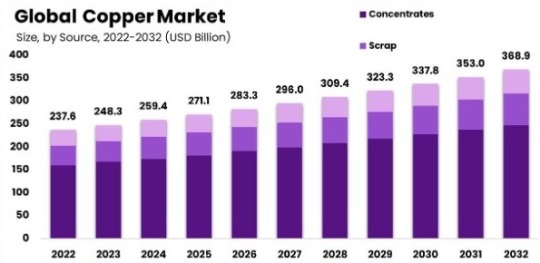
Copper Mining Market Size
The global copper mining market is significant, with billions of dollars invested annually in exploration, development, and production. According to recent data, the global copper market was valued at approximately USD 150 billion in 2020. Copper production totaled over 20 million metric tons in the same year, with major copper-producing countries including Chile, Peru, China, and the United States.
The market size is expected to grow steadily in the coming years, driven by increasing demand for copper in infrastructure projects, electrical wiring, and consumer electronics.
Copper Mining Market Share
The copper mining market is characterized by several major players who command significant market shares. Key players include multinational mining corporations, state-owned enterprises, and junior mining companies, each contributing to the global copper supply chain.
Copper Mining Market Trends
Several trends are shaping the copper mining market, including:
Technological Advancements: Advances in mining technologies, such as automation, remote sensing, and data analytics, are improving operational efficiency, safety, and productivity in copper mining operations. Innovations in extraction methods and processing techniques are also enhancing resource recovery and reducing environmental impacts.
Sustainable Practices: There is a growing emphasis on sustainability in copper mining, with companies adopting eco-friendly technologies, implementing energy-efficient processes, and engaging with local communities to minimize environmental impacts and promote responsible mining practices.
Supply Chain Resilience: The copper mining industry is adapting to evolving supply chain dynamics, including disruptions caused by geopolitical tensions, trade policies, and the COVID-19 pandemic. Companies are diversifying their supply chains, investing in inventory management, and enhancing logistics capabilities to ensure resilience and continuity of operations.
Copper Mining Market Challenges
Despite its growth prospects, the copper mining industry faces several challenges, including:
Resource Depletion: Declining ore grades and increasing extraction costs pose challenges for copper mining companies, necessitating investments in exploration and technology to maintain production levels and reserves.
Environmental Regulations: Copper mining operations have significant environmental impacts, including water pollution, habitat destruction, and greenhouse gas emissions. Regulatory requirements related to environmental compliance, mine closure, and community engagement are becoming increasingly stringent, driving up compliance costs and operational risks.
Market Volatility: Copper prices are subject to volatility due to factors such as supply-demand dynamics, macroeconomic conditions, and geopolitical tensions. Fluctuations in copper prices can impact the profitability and investment decisions of mining companies, requiring robust risk management strategies and financial planning.
Copper Mining Market Major Players
Leading companies in the Copper Mining Market include:
Codelco: Codelco is the world's largest copper producer, with operations in Chile and international exploration projects.
BHP Group: BHP is a global mining company with significant copper assets, including mines in Chile, Peru, and Australia.
Rio Tinto: Rio Tinto is a diversified mining company with copper operations in Mongolia, the United States, and Australia.
Glencore: Glencore is a major copper producer with assets in Zambia, the Democratic Republic of Congo, and Peru.
Freeport-McMoRan: Freeport-McMoRan operates copper mines in the United States, Indonesia, and South America.
Conclusion
The copper mining market presents significant opportunities for growth and investment, driven by increasing demand for copper in various industries. Despite facing challenges such as resource depletion and environmental regulations, the industry is poised for steady expansion, supported by technological innovation, sustainability initiatives, and market resilience. Collaboration, innovation, and responsible mining practices will be essential for ensuring the long-term sustainability and success of the copper mining sector.
#Copper Mining Market#Copper Mining Market Share#Copper Mining Market Trends#Copper Mining Industry#Copper Mining Market Size#Copper Mining Market Challenges#Copper Mining Industry Research Reports#Copper Mining Market Major Players#Copper Mining Market Research Reports#Copper Mining Market Competitor#Copper Mining Market Forecast#Copper Mining Market Outlook#Copper Mining Market Top Players#Global Copper Mining Market#Copper Mining Market Analysis
0 notes
Text
Exploring the Protected Cultivation Market: Revenue, Trends, and Key Players
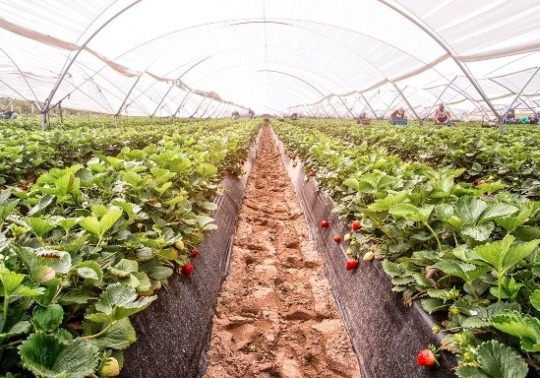
Introduction
Protected cultivation, also known as controlled environment agriculture, is a method of cultivating crops in a sheltered environment to optimize growth conditions and protect plants from adverse weather and pest damage. This article provides an in-depth analysis of the protected cultivation market, including its outlook, revenue, growth, size, trends, market share, and major players.
Protected Cultivation Market Outlook
The Protected Cultivation Market is witnessing a positive outlook due to increasing demand for fresh produce, changing climatic conditions, and advancements in agricultural technology. Market analysts project steady growth in the coming years, driven by the adoption of protected cultivation methods across various regions.
Protected Cultivation Market Revenue
In recent years, the revenue generated from the protected cultivation market has been on the rise. With the growing popularity of greenhouse farming and other protected cultivation techniques, the market revenue is expected to continue its upward trajectory, reaching new heights by the end of the forecast period. In 2020, the global protected cultivation market revenue stood at approximately USD 36.5 billion, and it is projected to reach USD 57.2 billion by 2025, reflecting a compound annual growth rate (CAGR) of 9.4%.
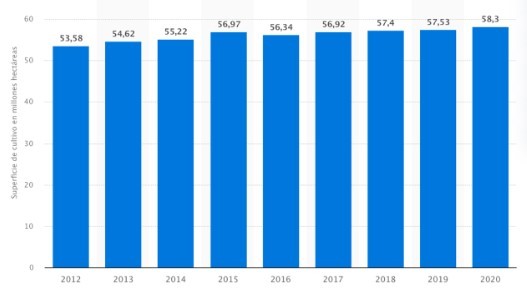
Protected Cultivation Market Growth
The protected cultivation market is experiencing significant growth, fueled by factors such as rising population, urbanization, and the need for sustainable agriculture practices. Innovative technologies, such as hydroponics and vertical farming, are contributing to the market's expansion by enabling year-round crop production in controlled environments.
Protected Cultivation Market Size
As the adoption of protected cultivation methods increases, the market size is also expanding. With a diverse range of applications in horticulture, floriculture, and specialty crop production, the protected cultivation market encompasses a wide variety of structures and systems tailored to different crop requirements. The global protected cultivation market was valued at USD 28.5 billion in 2020, and it is expected to reach USD 52.3 billion by 2027, growing at a CAGR of 8.7% during the forecast period.
Protected Cultivation Market Trends
Several trends are shaping the landscape of the protected cultivation market, including:
Vertical Farming: The trend towards vertical farming, where crops are grown in vertically stacked layers, is gaining momentum, especially in urban areas with limited space. Vertical farms utilize advanced technologies like hydroponics and LED lighting to maximize productivity in compact spaces.
Sustainable Practices: There is a growing emphasis on sustainability in protected cultivation, with farmers adopting eco-friendly practices such as integrated pest management (IPM), organic farming, and renewable energy use. Consumers are increasingly demanding produce grown using sustainable methods, driving the adoption of environmentally friendly techniques.
Automation and Robotics: Automation and robotics play a crucial role in enhancing efficiency and productivity in protected cultivation. Automated systems for irrigation, nutrient delivery, and harvesting streamline operations, reduce labor costs, and improve crop quality and yield.
Protected Cultivation Market Share
Several companies dominate the Protected Cultivation Market, holding significant market shares. Key players include greenhouse manufacturers, technology providers, and agricultural input suppliers who offer a range of products and services tailored to the needs of protected cultivation growers. The top five players in the global protected cultivation market accounted for over 45% of the market share in 2020.
Protected Cultivation Market Major Players
Leading companies in the protected cultivation market include:
Priva Holding BV
Richel Group
Certhon
Hoogendoorn Growth Management
Argus Control Systems Ltd.
Agra Tech, Inc.
Rough Brothers, Inc.
Heliospectra AB
Conclusion
The protected cultivation market presents significant opportunities for growth and innovation. With increasing awareness of food security and sustainability, coupled with advancements in technology, the adoption of protected cultivation methods is expected to continue expanding, revolutionizing the way we grow and consume fresh produce.
#Protected Cultivation Market Analysis#Protected Cultivation Market Demand#Protected Cultivation Market Forecast#Protected Cultivation Market Growth#Protected Cultivation Market Outlook#Protected Cultivation Market Revenue#Protected Cultivation Market Size#Protected Cultivation Market Trends#Protected Cultivation Market#Protected Cultivation Industry#Protected Cultivation Market Share#Protected Cultivation Industry Research Reports#Protected Cultivation Market Research Reports#Protected Cultivation Market Major Players
0 notes
Text
Exploring the Net Wrap Market: Revenue and Growth Opportunities
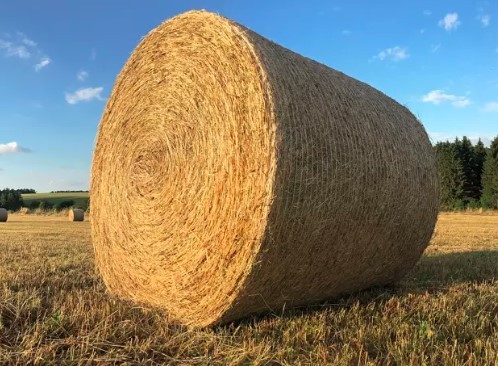
Understanding the Dynamics of the Net Wrap Market
Introduction to Net Wrap
Net wrap plays a crucial role in modern agriculture, providing an efficient and reliable solution for baling and preserving forage crops. It is widely used by farmers to secure and protect bales during storage and transportation.
Market Size and Growth
The Net Wrap Market is poised for significant growth in the coming years, fueled by technological advancements in baling machinery and the rising demand for high-quality forage. By 2028, the market size is expected to exceed USD 3.5 billion, reflecting a robust CAGR of 4.2%. Standard net wrap holds the largest market share, catering to the needs of small to medium-sized farms, while premium net wrap is gaining traction among large-scale commercial operations. By 2028, the market size of premium net wrap is estimated to reach USD 1.8 billion.
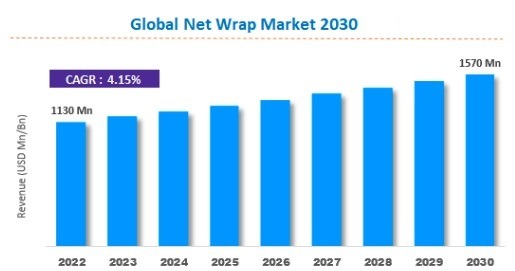
Market Demand Dynamics
The demand for net wrap is influenced by factors such as the expansion of the agriculture sector, growing awareness about the benefits of using net wrap, and the adoption of modern farming practices. Farmers are increasingly recognizing the importance of efficient forage preservation methods to minimize spoilage and maximize feed quality for livestock.
Analyzing Market Trends and Outlook
Emerging Trends in Net Wrap
Technological Advancements: Manufacturers are investing in research and development to introduce advanced net wrap products with enhanced durability, UV resistance, and ease of use.
Sustainability Initiatives: There is a growing focus on developing eco-friendly and biodegradable net wrap materials to reduce environmental impact and meet consumer preferences for sustainable agriculture solutions.
Increased Adoption of Round Balers: The rising adoption of round balers, especially in small and medium-sized farms, is driving the demand for net wrap as it offers efficient baling and wrapping capabilities.
Examining Market Revenue and Size
In 2021, North America dominated the net wrap market in terms of revenue, accounting for over 40% of the global market share. Europe and Asia-Pacific followed closely behind, with significant contributions from countries like the United States, Germany, and China. The market revenue is projected to surpass USD 1 billion by 2025.
Regional Analysis
North America: North America is the largest market for net wrap, owing to the presence of large-scale commercial farms and a well-established agriculture sector.
Europe: Europe is another significant market, driven by the adoption of modern farming practices and the emphasis on high-quality forage production.
Asia-Pacific: The Asia-Pacific region is witnessing rapid growth in the net wrap market, fueled by increasing farm mechanization and government initiatives to support agricultural development.
Market Size
The net wrap market size varies across regions, with North America and Europe accounting for the largest market share due to the high adoption rate of advanced farming technologies. Asia-Pacific is expected to emerge as a lucrative market opportunity, driven by the growing demand for forage preservation solutions in countries like China, India, and Australia.
Conclusion: Navigating the Future of the Net Wrap Market
The Net Wrap Market presents promising opportunities for manufacturers, distributors, and stakeholders involved in the agriculture sector. By staying abreast of market trends, technological advancements, and consumer preferences, industry players can position themselves for success and contribute to the continued growth and innovation of the net wrap market. As the agriculture industry evolves, net wrap will remain a critical component of efficient forage management, providing farmers with the tools they need to optimize crop yields and ensure food security for a growing global population.
#Net Wrap Industry#Net Wrap Market#Net Wrap Market Analysis#Net Wrap Market Demand#Net Wrap Market Forecast#Net Wrap Market Growth#Net Wrap Market Outlook#Net Wrap Market Revenue#Net Wrap Market Size#Net Wrap Market Trends#Net Wrap Market Research Reports#Net Wrap Industry Research Reports#Net Wrap Market Key Players#Net Wrap Market Top Players#Net Wrap Market Major Players#Net Wrap Market Opportunities
0 notes